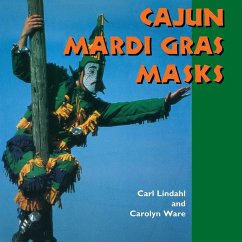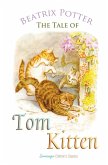Every winter a handful of Cajun Louisiana folk artists assembles unlikely mixtures of material to shape masks for their Cajun Mardi Gras celebrations. They use window screens, chicken feathers, yarn, hair, Magic Markers, and hot glue as they create fanciful, even bizarre masks that will be worn just one day in the year. Such creations transform their wearers into wild revelers who move through the countryside singing, dancing, and begging for money and food. As they generate merriment, they climb trees, chase chickens, and create a general and playful havoc. Cajun Mardi Gras celebrants are unlike their counterparts in New Orleans, where masked revelers ride through the streets on floats or parade serenely through ballrooms. The masked country Cajuns engage in rousing, physically energetic performances as they cavort through the countryside. Out of necessity their captivating masks combine the ingredients of durability, shock value, and allure with age-old folk patterns and innovations from contemporary culture. Here is a study of the Cajun Mardi Gras tradition and its manifestation in the work of six of the most creative and popular folk artists in two rural communities. Potic Rider and the Moreau and LeBlue families represent the male maskmaking traditions of Basile, Louisiana. Suson Launey, Renee Fruge, and Jackie Miller portray the female role in festivities held in the rural region of Tee Mamou. As the communities celebrate, their masks become an intrinsic component of the annual rites. This book introduces the artists, the performances, and processes of creating the fantastical masks. Carl Lindahl, co-editor of Swapping Stories: Folktales from Louisiana (University Press of Mississippi), is a professor of English at the University of Houston. Carolyn Ware is Coordinator of the Pine Hills Culture Program at the University of Southern Mississippi in Hattiesburg
Hinweis: Dieser Artikel kann nur an eine deutsche Lieferadresse ausgeliefert werden.
Hinweis: Dieser Artikel kann nur an eine deutsche Lieferadresse ausgeliefert werden.








